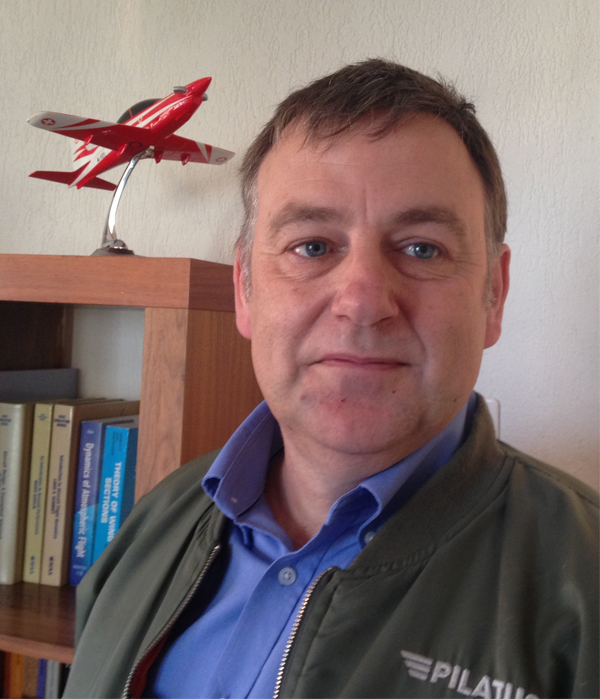He began a technician apprenticeship with Westland Helicopters in Yeovil, in the South West of the UK. Following a period of working as design draftsman and stress engineer, Nick came to work for Pilatus Aircraft Ltd in Switzerland, nine years ago.
Why did you choose a career in engineering?
I was good at the physical sciences at school and I loved taking things to pieces. Westland participated in a recruitment fair at my school and that was it - I knew right away that’s what I wanted to do.
I am responsible for ensuring that all structurally related products designed by Pilatus: airframes, landing gears and the like, conform to the appropriate airworthiness regulations. This involves reviewing engineering reports, test plans etc, as well as witnessing physical tests – landing gear drops, pressure hull tests, full scale static and fatigue tests and component tests. I also have responsibilities for in-service fleet issues, repairs, continued flight safety and aircraft modifications.
What is a typical working day for you like?
Every day is different. My job is office based, but I spend quite a bit of time with the aircraft and in the assembly halls. Like most jobs, I attend a good number of meetings. In the main these involve providing interpretive guidance against the airworthiness requirements. This might sound a little dry, but it really isn’t. There are many routes to arriving at a successful conclusion and that’s where creative, as well as objective, thinking is important.
What are the most enjoyable and most challenging aspects of your job?
I very much enjoy the team environment, particularly problem solving. Engineering for me is the bridge between academia and manufacturing. Academic knowledge is important, but it’s the application of the physics to practical problems that I find most rewarding. It is often said that engineering is an art not a science. It’s a view that I subscribe to. Engineers have a habit of wanting to do things the hard way. Sometimes by considering the problem from a different angle, a more elegant solution can be found. That said, objectivity is a key pillar to my role in order to ensure that compliance to the regulations is demonstrated.
 Why did you become a member of the Institution and what benefits have you had from this?
Why did you become a member of the Institution and what benefits have you had from this?
At the time I was managing quite a large department and there was a clear demand for engineering mentoring. I joined the institution principally in order to extend my skills in this area.
I was never much of a networker in the past, but I find myself doing more of it. Perhaps it’s an age thing. I enjoy the opportunity to chat with engineers outside of the aircraft industry. There are a good number of Institution members in Switzerland involved in hydro-electric power generation and it’s interesting learning about their experiences. The physics is similar in many ways, but the scale is very different.
What are your plans for the future?
Pilatus is right in the middle of its first jet aircraft development (all existing aircraft types are turboprops). I am committed to see the project through to certification. It’s a huge challenge, but in the best possible way. I can’t imagine a more engrossing environment to be in at the moment.
What advice would you give to young, developing engineers who are thinking about where their careers could take them?
My advice is always the same. Don’t be in a rush to ascend the career ladder. Spend at least three years and ideally five learning your trade. In my case this was stress analysis, but there are many routes an engineer can pursue. If you later decide to ascend into management, you will always have it to fall back on, should things not work out. The processes move on, but the fundamental principles remain. Secondly one must be prepared to move around a bit. Engineers are typically cautious animals. Be brave!